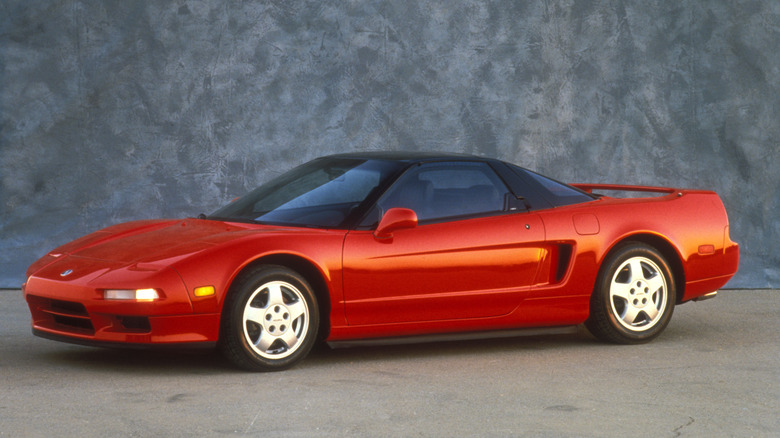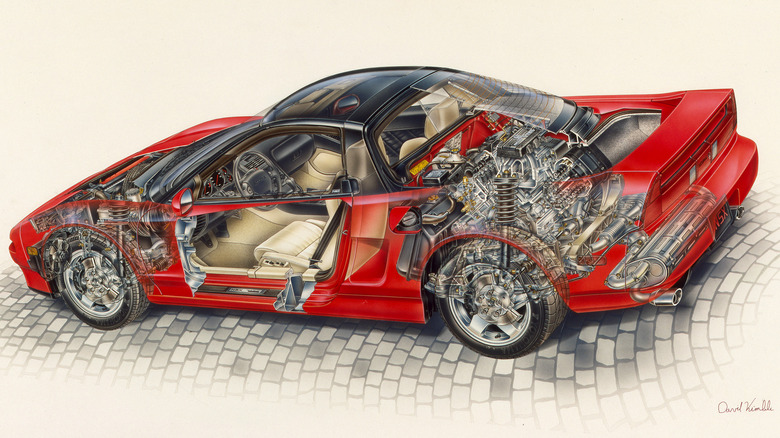What Acura's NSX Abbreviation Means
The Acura/Honda NSX stands out as one of the most memorable Japanese sports cars to ever exist. The first generation NSX, which first debuted for the 1991 model year, immediately changed what sports cars could be. It was the first ever all-aluminum production car and showed that high-end sports cars didn't have to be finicky unreliable garage hogs. After all, under the impossibly low sleek exterior, the NSX was still about as reliable as any other Honda from the time.
Ed Taylor, then Vice President of Acura, said in a 1991 press release: "The NSX is a milestone automobile that offers uncompromised performance and redefines the pure sports car driving experience. The NSX embodies the comfort and reliability Acura is known for, bringing an unprecedented level of quality and driveability to the mid-engine exotic class."
Honda further notes that it was explicitly designed after the F-16 Fighting Falcon fighter jet. The NSX at release did have a zero to 60 mph time of just over five seconds, so Honda got pretty close. Even down to the very name, the NSX was trying to set itself apart from the rest of the automotive world.
Honda's road-going fighter jet
In the early 1990s, sports cars and supercars had exciting names like "Diablo" from Lamborghini, "Supra" from Toyota, and "Viper" from Dodge. The NSX was seemingly just some cool-sounding consonants to the uninitiated. However, the name is an acronym that points to the fact that the NSX from destined to be a groundbreaker: it stands for "New Sports car, Experimental." With over 30 years of hindsight, Honda absolutely delivered on the claims set forth by the NSX's very name.
It was undoubtedly new by almost every stretch, Honda wasn't known for making cars that punched well above its weight class, much less ones made out of aluminum. It was a sports car, as it had a top speed of 165 miles per hour and was even called "the world's best sports car," according to Honda. There was also no doubt the car was experimental in nature. Before the NSX, the sportiest car Honda made was the Prelude. As good as the Prelude is, it's still a front-engine fairly conventional car (albeit one available with four-wheel steering). The NSX was mid-engine and wasn't gunning to beat Lexus, Mercedes, BMW, or other more "pedestrian" brands. It was aimed squarely at Ferrari and Lamborghini.

